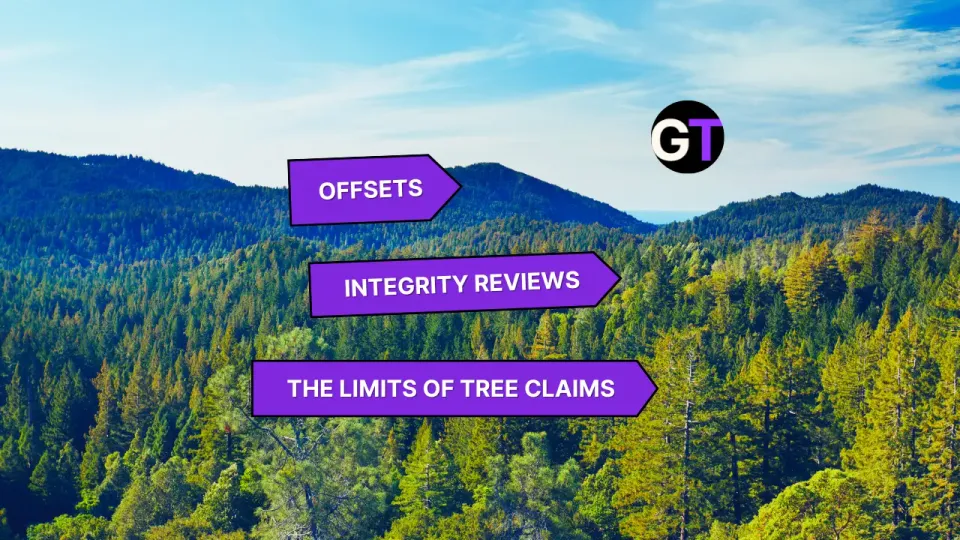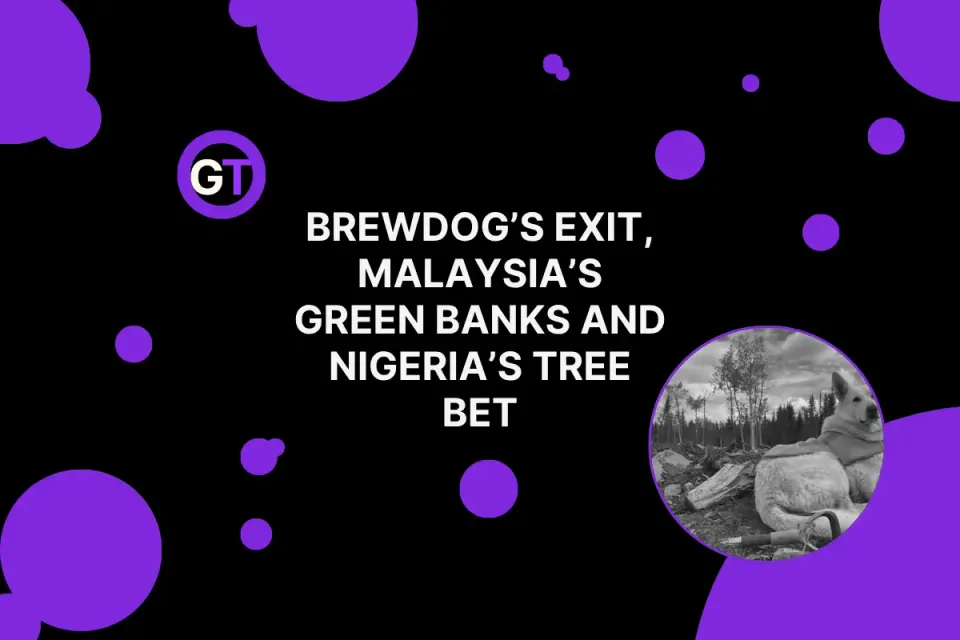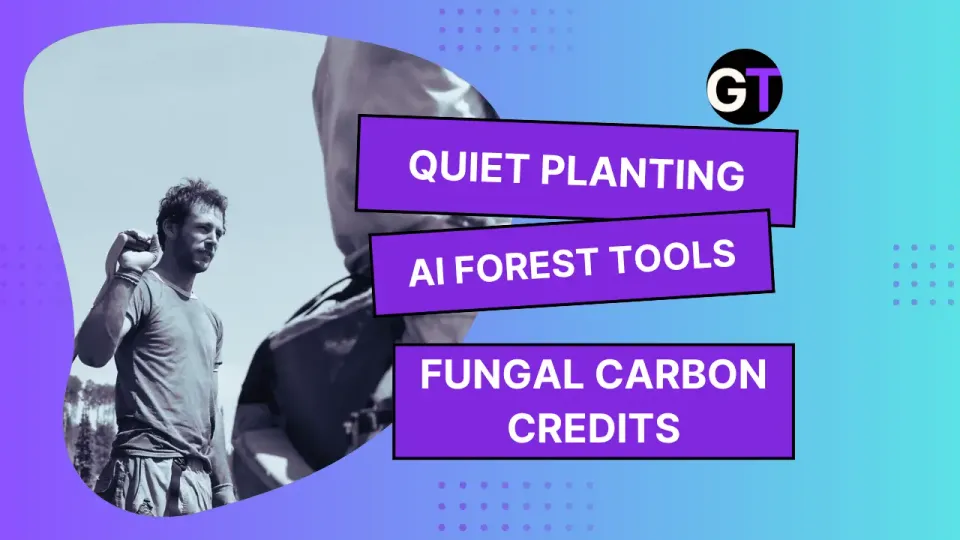Saudi Credits, Cerrado Cows & U.S. Timber Push
Carbon deals, timber goals, and reforestation pledges collide in a pivotal week for the future of forest finance and climate resilience.

Saudi Arabia Inks 30M-Tonne Carbon Credit Deal for NEOM
ENOWA, NEOM’s energy and water arm, has signed a landmark long-term agreement with the Voluntary Carbon Market Co. to purchase over 30 million tonnes of high-integrity carbon credits by 2030. The credits, sourced mainly from Global South projects, will help offset ENOWA’s current emissions as it builds renewable infrastructure. This deal marks a major step in scaling Saudi Arabia’s voluntary carbon market, aligning with its goal to reach net-zero by 2060. The platform includes Shariah-compliant tools, auctions, and over-the-counter trading.
💬 Can large-scale credit deals truly fast-track sustainable urban megaprojects?
👉👉 Read more in Arab News
Inside the Forest Finance Strategy of Gresham House
In this episode of The Forest Link, Gresham House’s Olly Hughes and David Gardner unpack how institutional forestry portfolios can deliver both financial returns and climate benefits. They explore timberland as a natural capital asset, covering its inflation-linked stability, the rise of afforestation-linked carbon markets in Australia and New Zealand, and the strategic value of biodiversity KPIs. Certification, they argue, is only the baseline—true impact comes from active sustainability integration and long-term forest stewardship.
💬 Can timber portfolios really balance profit, carbon, and biodiversity?
👉👉 Read more at The Forest Link
Can trees and cattle coexist profitably?
A new study explores whether restoring degraded pastures in Brazil’s Cerrado with integrated crop–livestock–forest (ICLF) systems can make financial sense. Spoiler: it can—but only if the financing is right. Researchers modeled a 2-hectare system featuring native Dipteryx alata trees and cattle pasture, simulating 20 years of cash flow. They found that subsidized rural credit (like Pronaf or ABC Ambiental) led to strong returns, while self-financing or high-cost loans didn’t cut it. The takeaway? With the right support, ICLF offers a scalable path toward sustainable, productive agriculture.
💬 Could better access to rural credit help scale regenerative agriculture in other parts of the world too?
👉👉 Read more in Forests
EthioTrees Project Scales Up, Bringing 100K+ Carbon Credits and Big Local Gains
The EthioTrees initiative in Ethiopia’s Tigray Highlands has partnered with Climate Impact Partners, unlocking over 100,000 verified carbon removal credits each year. But this isn’t just about offsets—EthioTrees has planted over 8 million native trees, improved biodiversity by 41%, built 15+ reservoirs, and supports local incomes through frankincense and honey. With 60% of revenue going directly back to smallholders, it’s a case study in people-powered climate action.
💬 How do we scale reforestation projects that genuinely benefit local communities—not just corporate carbon targets?
👉👉 Read more from Climate Impact Partners
Brazil’s Agroforestry Fund Raises $18M to Restore Ecosystems
Patria Investimentos has closed the first round of its Reforest Fund, raising R$100 million (~US$18M) to support agroforestry projects that blend native species with high-value crops like cocoa, coffee, and açaí. The long-term goal? R$1.2 billion (~US$216M) to restore degraded land in Brazil’s Atlantic Forest and beyond. With guidance from Pachama and partnerships with local forestry experts, the fund promises a mix of regeneration and return.
💬 Can agroforestry unlock both ecosystem recovery and long-term financial value?
👉👉 Read more in Funds Society
USDA Commits $200M to Boost Timber Harvests Under Trump-Era Forest Plan
The U.S. Department of Agriculture has pledged $200 million to implement the Forest Service’s National Active Management Strategy, aiming to raise timber production by 25% and hit 4 billion board feet annually by 2028. This funding backs an earlier Trump Executive Order that called for immediate timber expansion. The plan prioritizes expedited project approvals, streamlined environmental reviews, and long-term timber contracts to give industry players greater investment confidence—while also emphasizing wildfire risk reduction and forest health.
💬 Can streamlined regulations and aggressive harvest targets coexist with sustainable forest stewardship?
👉👉 Read more on Timber Harvesting
Carrier to Plant 5 Million Trees with Arbor Day Foundation
Carrier has pledged to plant 5 million trees by 2030, partnering with the Arbor Day Foundation to restore ecosystems in Brazil, India, Kenya, Mexico, England, and across the U.S. The company will support reforestation in areas impacted by hurricanes, deforestation, and climate stress—such as Florida’s storm-ravaged forests and the Amazon Basin.
💬 If each tree offers quantifiable environmental benefits, what might the dollar value of this massive reforestation project look like?
👉👉 Read more at Carrier
Can Blue Carbon Fund Louisiana’s Wetlands?
A new study from Tierra Resources and The Climate Trust estimates that carbon finance could generate up to $1.6 billion over 50 years to support wetland restoration on Louisiana’s coast. The two-year assessment, backed by Entergy Corporation, examined techniques like river diversions, mangrove planting, and wetland assimilation systems, identifying their potential for offset revenue and climate impact.
💬 How much real-world funding could blue carbon offsets unlock—and will it be enough to turn the tide on wetland loss?
👉👉 Read the full report from The Climate Trust

Edited by Chris Harris

This work is licensed under a
Creative Commons Attribution 4.0 International License.





